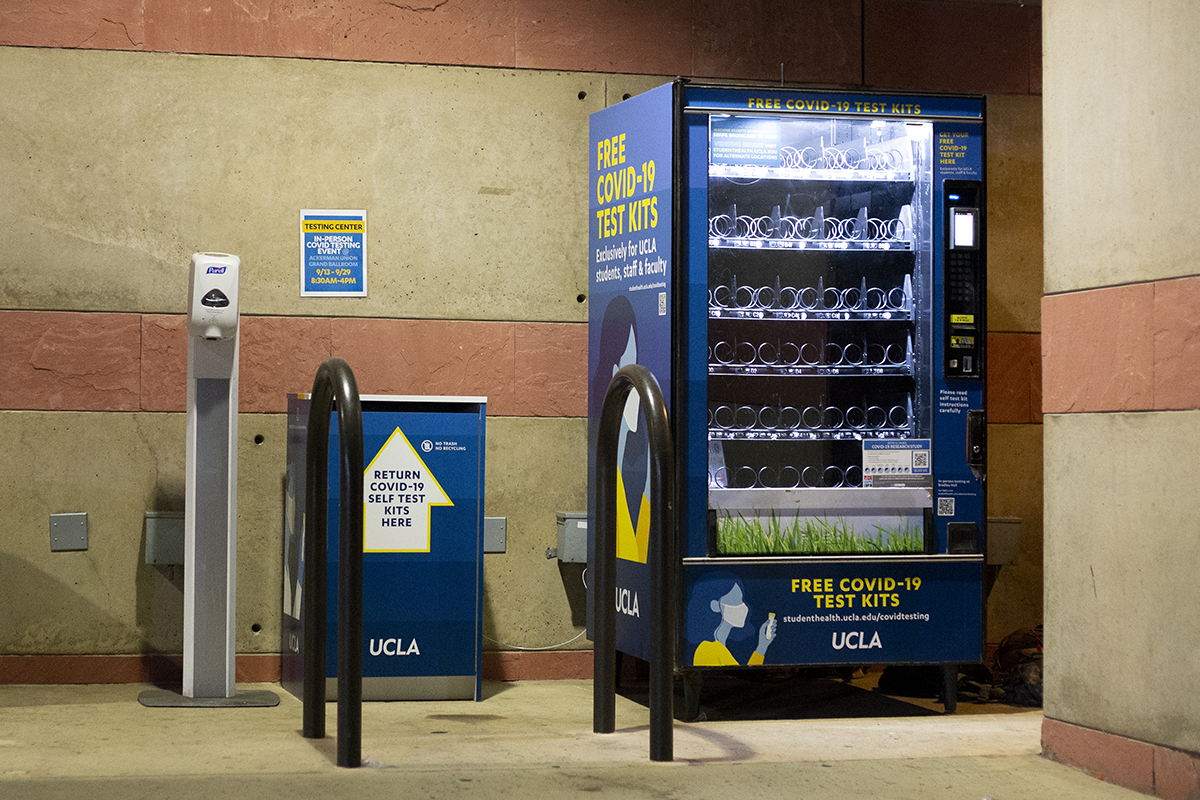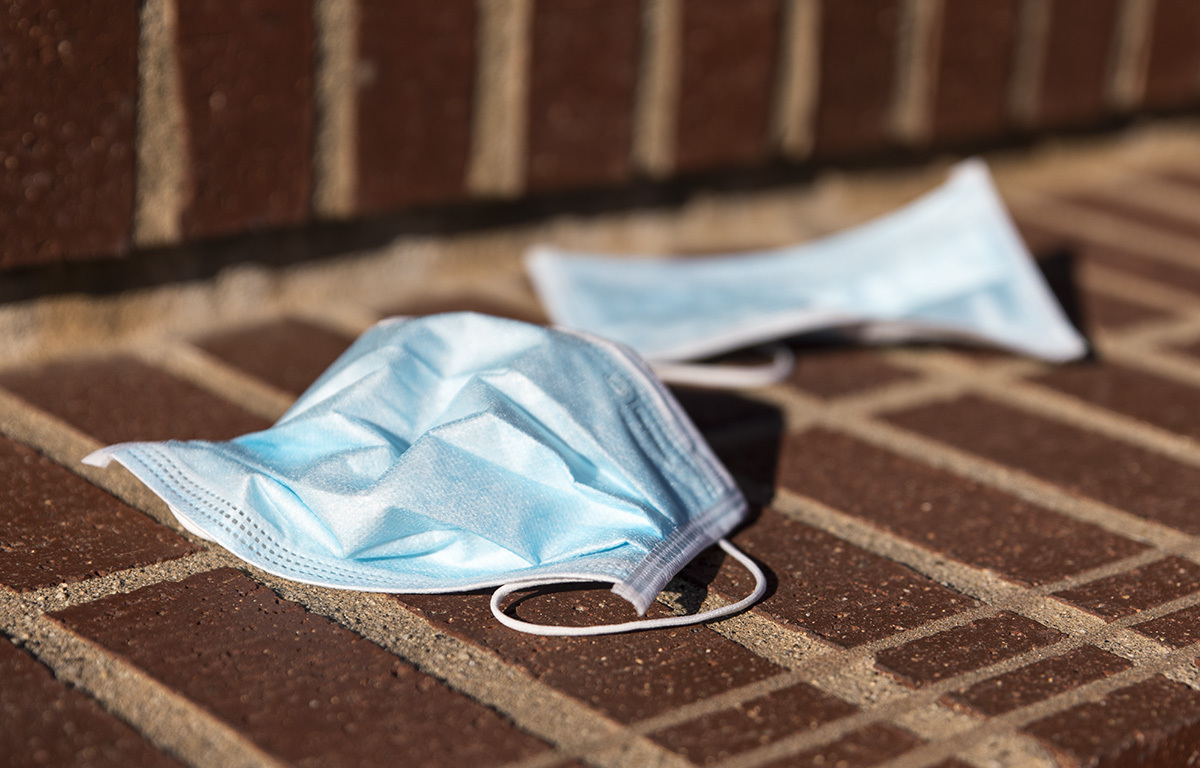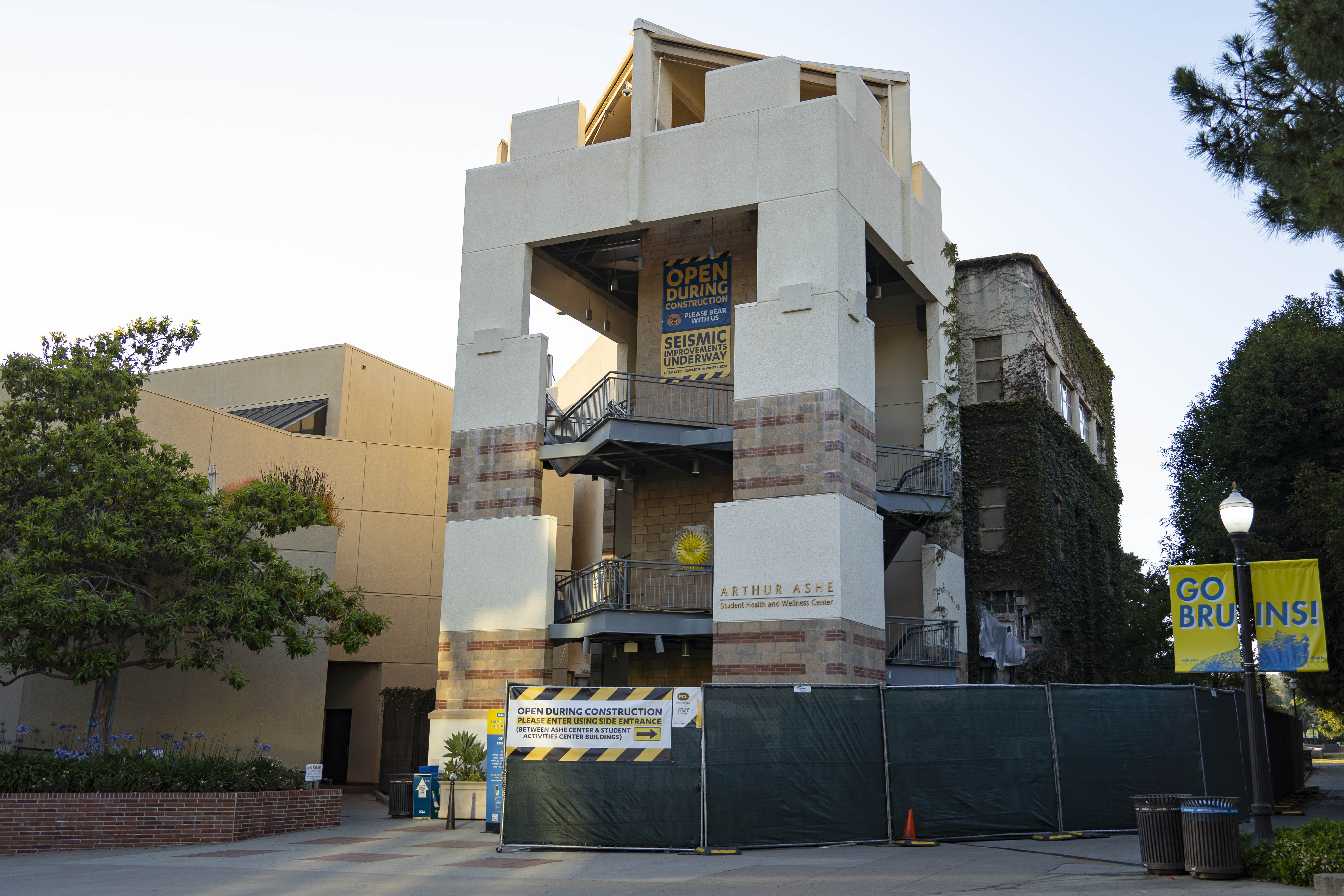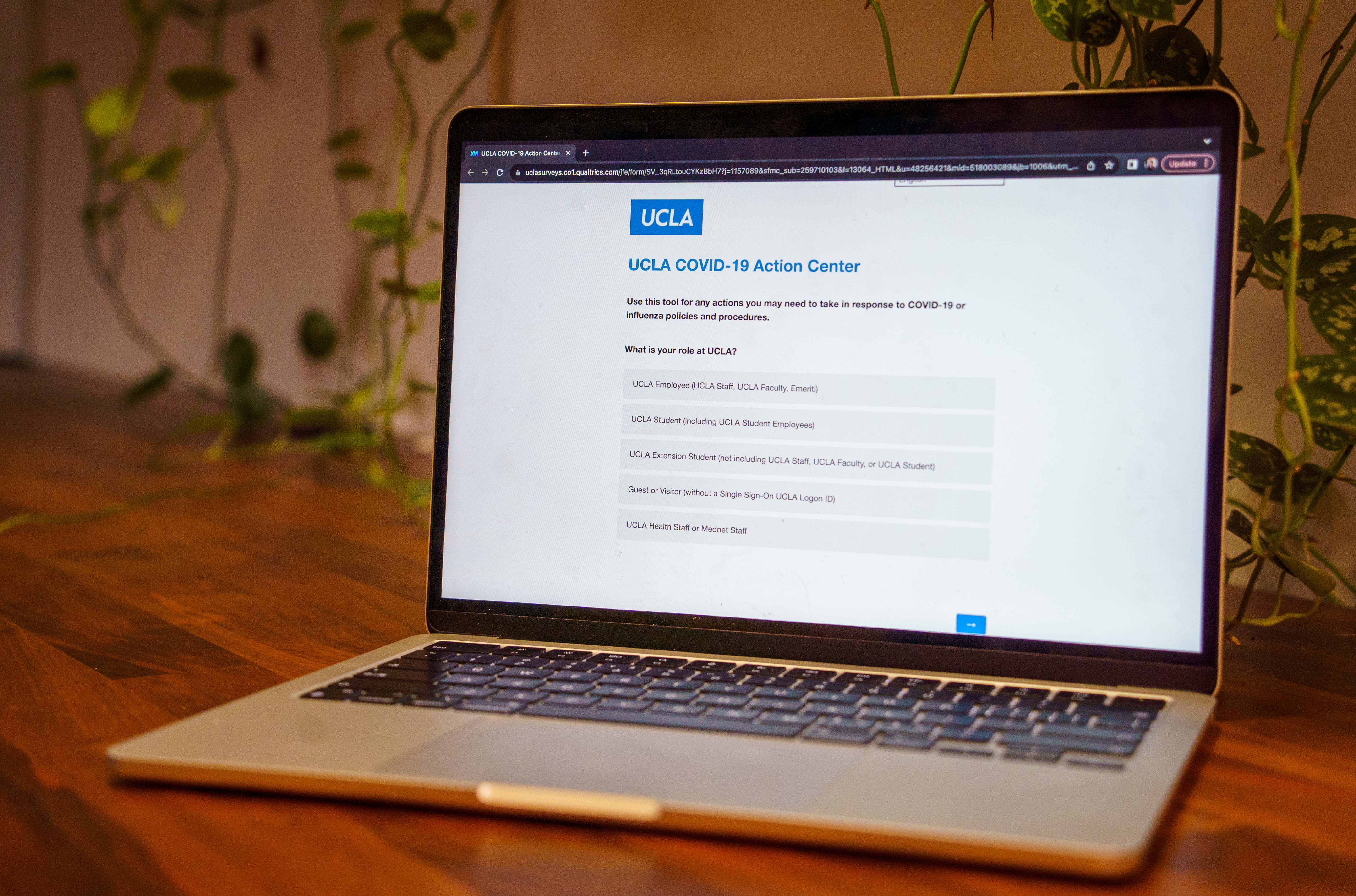Q&A: Dr. Chaitali Mukherjee introduces Ashe Center’s new COVID-19 safety campaign
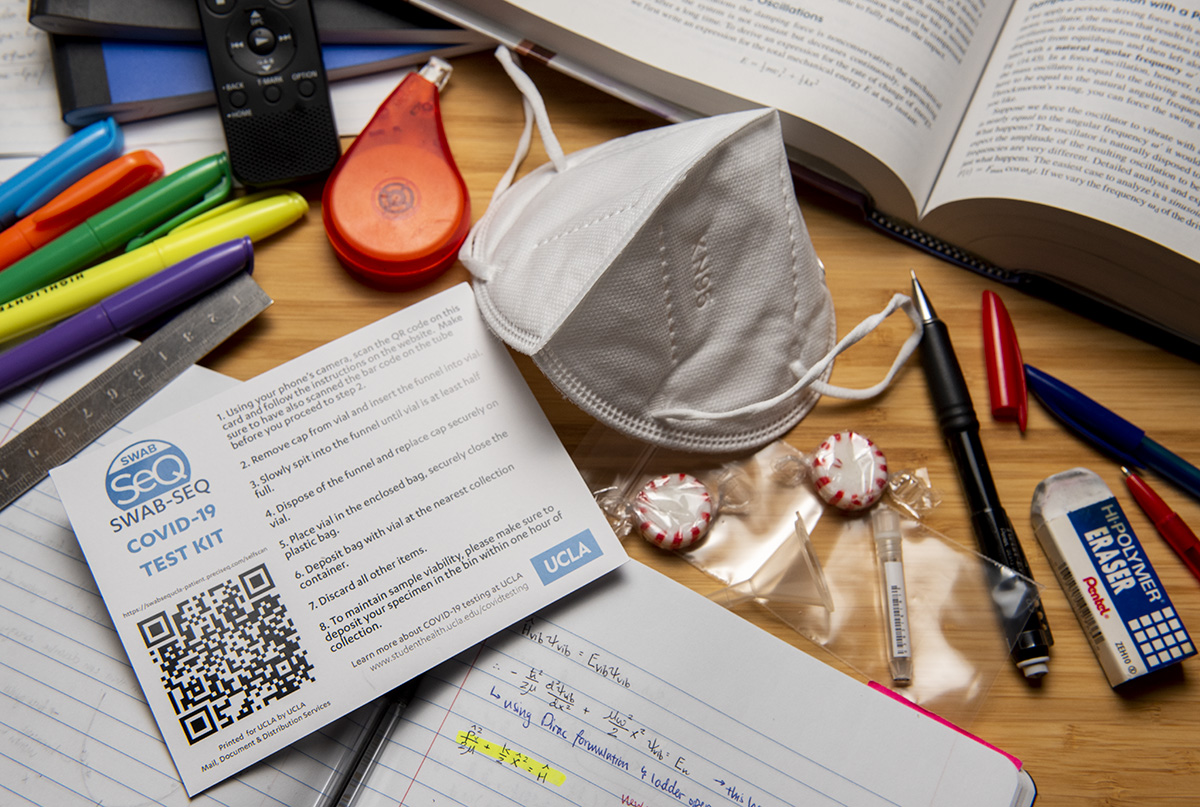
A KN95 mask sits amid stationery, books and a COVID-19 test kit. Dr. Chaitali Mukherjee, executive director of the Arthur Ashe Student Health and Wellness Center, spoke about the center’s new COVID-19 awareness campaign, which includes updated signage and locations around campus to pick up masks. (Daily Bruin file photo)
By Shaun Thomas
March 31, 2024 7:34 p.m.
Dr. Chaitali Mukherjee, executive director of the Arthur Ashe Student Health and Wellness Center, sat down with Daily Bruin contributor Shaun Thomas to discuss the Ashe Center’s new COVID-19 safety campaign as students return to campus from spring break.
Mukherjee, who has practiced medicine since 2006, has worked at UCLA and UC San Francisco during the COVID-19 pandemic. The new program includes a signage campaign reminding students about COVID-19 mitigation strategies and sites to pick up masks around campus.
This interview has been edited for length and clarity.
Daily Bruin: With UCLA COVID-19 numbers being low, why is this new COVID-19 campaign necessary?
Chaitali Mukherjee: It’s necessary precisely because we are in a different phase. Early on in the pandemic, the communication and the awareness among our community was heightened. In the last couple of months – especially as we’re winding down cold and flu season and respiratory virus season – I think it’s important for people to understand what the risks are, how to make informed decisions and to best protect themselves and those around them. The need for up-to-date, current and accurate information necessitated this refresh.
DB: Can you provide an overview of the key messages and goals of this new campaign?
CM: The first of the key messages is how to reduce risk: how to keep oneself safe and protect others with the layer of mitigation strategies – vaccines, masking, testing and treatment. The second key message is that wearing a mask is a great way to reduce the spread of respiratory infections – COVID-19 being one of them, but other viruses in circulation as well. The third key message is that there are certain places where COVID-19 spreads more easily, so it’s important to be aware of that, whether it’s enclosed spaces where the ventilation is poor, crowded environments or where you may be in close contact with others. The final message we wanted to highlight was awareness of long COVID. At this point in the pandemic, many people have either been exposed, infected in the past or have some kind of immunity due to vaccination. However, the risks of what long COVID could entail may not be top of mind.
DB: Who’s involved in this campaign and in what capacity?
CM: The Ashe Center team – so, myself, as well as members of our health education and promotion team, our outreach program and communications teams. The Disabled Student Union and the (Undergraduate Students Association Council) Student Wellness commissioner were our main partners in this joint campaign and the administration, as well. It was a multi-pronged approach.
One portion was the signage refresh – the educational campaign piece. The other part of this health promotion campaign was to lower barriers for access to various types of masks. There are 25 front desk sites at various offices throughout campus that have all types of masks available, including surgical masks, KN95s, KF94s and N95s.
DB: At this stage, what do you think every Bruin should know about COVID-19?
CM: The most important thing to know is that treatment is available. That is something we provide at the Ashe Center. Students are able to consult with Ashe Center providers and receive medication at the Bruin Health Pharmacy.
We also have vaccinations available. The updated vaccines that have been available for several months – those are extremely effective still with the circulating strains. For folks who have risk factors, or are in close proximity to others who may have medical conditions or be at higher risk for complications, they are strongly advised to get the updated vaccine.
Thirdly, our circulation of the virus has reduced. The best way to know what you have is to get tested, and we have free testing available at the SwabSeq saliva testing sites. There’s four vending machines on campus that are available for free PCR testing through a program with UCLA SwabSeq and the California Department of Public Health. There’s testing available at the Ashe Center as well.
DB: How will the Ashe Center ensure that the campaign’s messaging is inclusive of the diverse student population?
CM: This campaign really began from the voice of the students, and we have been continuing to engage with our student leaders to make sure that messaging is reaching our intended audience in places and ways that they would find the information digestible and easily accessible. We’ve intentionally had the sites where the masks are available be in various locations around campus, whether it’s North Campus, South Campus – whatever major a student may have, they may be having a cluster of classes in one location over another. (Masks are) also in different Student Affairs offices, where support services are available, and identity-based centers are present to make sure there’s a person you can talk to that would be able to guide you to where resources are. Our hope is that by having this broad, multi-pronged approach to this campaign – with structural and environmental cues, reminders with updated signage, accessibility to masks, lowered barriers that would help folks that are coming to campus for various different things and may have different needs – that they would have the ability to get the information they need.
DB: What has worked and what hasn’t in past campaigns? How have you modified the campaign over time?
CM: It’s a hard question to answer. Most of the time, it’s important to overcommunicate because people consume information differently. From all the feedback I’ve received, email is not an effective method. A lot of effort has gone into making sure we send out information through various email channels, and what we’ve learned is that not everyone always reads their email. The biggest lesson is making sure that accurate up-to-date information is available, and people know where to look. Learning how to be as proactive as we can be to help people know where to go, so that they know what to look for when it’s relevant for them, is a good takeaway from that.
DB: How can students support this campaign to promote COVID-19 safety on campus?
CM: I would say keeping your social networks informed. Let people know where you can get the resources. If you need masks, testing – let’s say you’re going to get together with people or go to a festival where there’s a slightly higher risk – knowing that, “Hey, maybe we should all get tested ahead of time if there may be people who would be more vulnerable.” It’s important for students to share what would be helpful to them, so that way we can continue to provide the services students need and make sure that we continue to be a source of information that you can trust to make decisions about your health.



